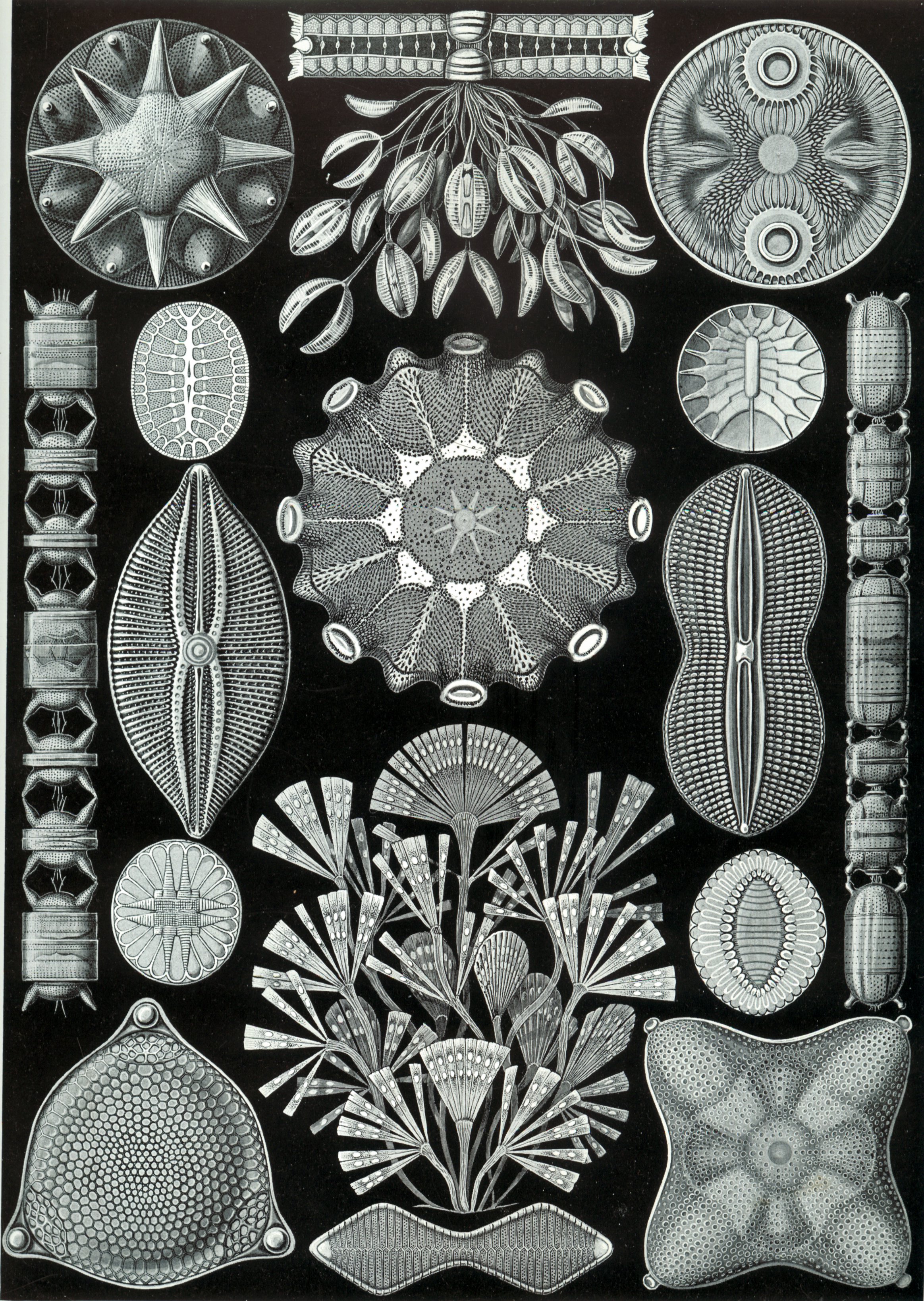 The 84th plate from Ernst Haeckel's Kunstformen der Natur (1904), depicting diatoms (Bacillariophyceae) http://commons.wikimedia.org/wiki/File:Haeckel_Diatomea.jpg
The 84th plate from Ernst Haeckel's Kunstformen der Natur (1904), depicting diatoms (Bacillariophyceae) http://commons.wikimedia.org/wiki/File:Haeckel_Diatomea.jpg- Diatom shell is made of Silica, the primary constituent of glass. (Silicon is in human connective tissues, bones, teeth, skin, eyes, glands and organs. It is a major constituent of collagen which helps keep our skin elastic, and it helps calcium in maintaining bone strength.)
- Diatoms are a major group of eukaryotic algae, and are one of the most common types of phytoplankton. Most diatoms are unicellular, although they can exist as colonies in the shape of filaments or ribbons (e.g. Fragillaria), fans (Meridion), zigzags (Tabellaria), or stellate colonies (Asterionella).
- When nutrient and light conditions are right, all diatoms are able to bloom - reproduce very quickly into huge numbers. They do this through vegetative or asexual reproduction. http://www.mbari.org/staff/conn/botany/phytoplankton/phytoplankton_diatoms.htm
- Diatoms are primary producers, carrying out photosynthesis using a large proportion of a the pigment fucoxanthin. Fucoxanthin is contained in one or several round or star-shaped chromatophores, where photosynthesis takes place.
- Diatoms come in two flavors: the round Centrales, and long or pen-shaped Pennales. http://www.mbari.org/staff/conn/botany/diatoms/john/basics/descript.htm
- Diatoms account for 23% of the primary productivity of the world. That means that of all the photosynthesis going on at any one time, almost one-quarter of it is happening inside a diatom.
- As primary producers, diatoms play a key role in marine food webs. They are an important food item for a larger class of animal plankton (zooplankton) such as copepods, as well as for all kinds of filter and suspension feeders from worms to anemones to mollusks like clams and mussels. http://www.mbari.org/staff/conn/botany/diatoms/john/basics/eco.htm
- A diatom must live, on the average, at or above the critical depth, where sunlight is sufficient for photosynthesis. Natural selection has tuned all these factors to let diatoms live above that special depth. http://www.mbari.org/staff/conn/botany/diatoms/john/special/position.htm
- Diatoms can be found in both fresh water and marine environments. Generally, diatoms inhabit most bodies of water in all parts of the world (if provided with sufficient amounts of nutrients). http://www.mbari.org/staff/conn/botany/diatoms/jennifer/introa.htm
Domain: Eukaryota
Kingdom: Chromalveolata
Phylum: Heterokontophyta
Class: Bacillariophyceae
Order: Centrales & Pennales
Diatom Quick Facts:
Cell size: 20-200 m m
Cell wall: SiO 2 or glass frustule
Chloroplasts: many/cell, 3-5 thylakoid membranes/stack
Photo-pigments: chlorophyll a & c, carotenoids
Reproduction: most often simple cell division, sexual reproduction
Ecological roles: produce deposits (diatomaceous earth), toxic blooms
Common genera: Chaetoceros, Pseudonitzschia, Skeletonema
.


